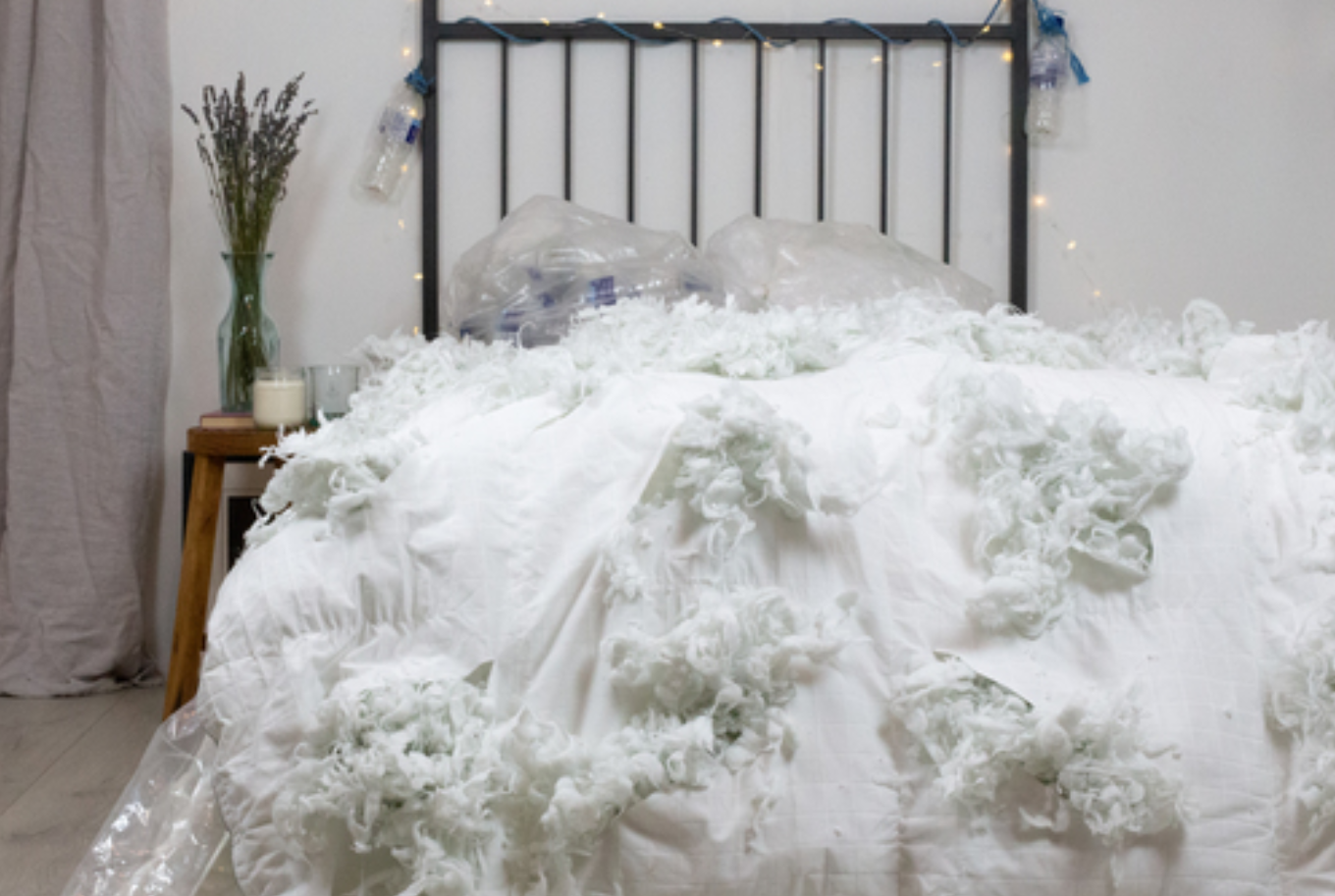Is there plastic hidden in your bedding?


When choosing new bedding, you probably focus on comfort and value. But have you considered the impact of plastic in your sleep essentials? Here’s a quick look at the key points to keep in mind for a more sustainable choice:
Sources of Plastic in Bedding
- Polyester Fillings: Common in microfibre and hollowfibre bedding, polyester is a petroleum-based plastic that contributes to microfibre pollution.
- Memory Foam: Often made from polyurethane plastics, memory foam can off- gas harmful chemicals like VOCs and is difficult to recycle.
- Plastic Packaging: Bedding often comes wrapped in single-use plastic that adds to environmental waste.
Environmental Impact
- Oil Consumption: Producing polyester consumes nearly 70 million barrels of oil annually.
- Microfibre Pollution: Microfibres, tiny plastic particles, pollute water systems and enter the food chain.
- Landfill Issues: Many bedding items end up in landfills or oceans, contributing to long-term environmental damage.
Go Plastic-Free
Plastic-free bedding offers bedding made from natural, biodegradable materials with zero single-use plastics in their packaging. Opting for their eco-friendly products can significantly reduce your environmental footprint.
Top Tips for a Plastic-Free Sleep
- Choose Natural Materials: Look for bedding made from goose down, wool, or organic cotton.
- Buy Quality: Invest in durable, natural bedding that avoids plastic packaging.
- Recycling: Consider donating old bedding or choosing recycled microfibres if synthetic options are necessary.
- Reduce Washing: Minimize washing synthetic bedding to prevent microfibre release.
Key Plastic Pollution Facts
- Microfibres make up 85% of man-made debris.
- Plastics in Water: Up to 40% of microfibres from laundry end up in aquatic systems.
- Health Risks: Microplastics can carry harmful chemicals and enter the food chain.
By making mindful choices, you can enjoy a restful night’s sleep while contributing to a healthier planet
1. Fabric First
Choosing the right fabric is essential for comfort and durability. While synthetic fabrics like satin may feel smooth at first, they often lack breathability and wear out more quickly. Instead, opt for high-quality natural fabrics like cotton. Cotton pillowcases offer better breathability, last longer, and are easier to maintain.
2. Choose a Reliable Online Store
Opt for reputable online retailers with a wide selection of sheets and brands. Look for sites that offer competitive prices, frequent promotions, and solid customer service. Good stores will also provide free delivery and flexible return policies.
Cotton comes in various weaves to suit your preferences. You can choose between:
- Sateen for a smooth, silky feel
- Percale for a crisp, cool texture
- Flannel for warmth and coziness during cooler months.
By investing in a natural fabric like cotton, you’ll enjoy both comfort and durability for years.
2. Size Matters
Picking the right size pillowcase is just as important as choosing the right fabric.
Here are the typical pillow sizes in the U.S.:
- Euro pillow (26” x 26”): Often used for decorative purposes or placed against the
headboard. - Standard pillow (20” x 26”): Common for twin, full, and queen beds.
- King pillow (20” x 36”): Ideal for king-size beds.
- Boudoir pillow: A smaller pillow often used for neck support or decoration.
If you’re refreshing your bedding, take this opportunity to consider the size and type of pillows you’re using. Matching your pillowcase to your pillow size ensures proper fit and support.
3. Shams and Closures
Finally, it’s important to consider the details. Pillowcases and shams may seem similar, but they serve slightly different purposes.
- Pillowcases are open on one side and are typically used for sleeping pillows.
- Shams, on the other hand, are decorative covers with a finished edge on all sides.
- They often open in the back and are used for decorative pillows like Euros or
Boudoirs.
When it comes to closures, consider how you sleep and your maintenance routine.
Common options include:
- Envelope-style openings (easy to slip pillows in and out)
- Zippers (keep pillows securely inside)
- Ties or overlap fabric closures (more decorative, often seen on shams)
Whether you're looking for practicality or style, choosing the right pillowcase fabric, size, and closure will enhance both the look and comfort of your bed. Happy pillowcase shopping!
